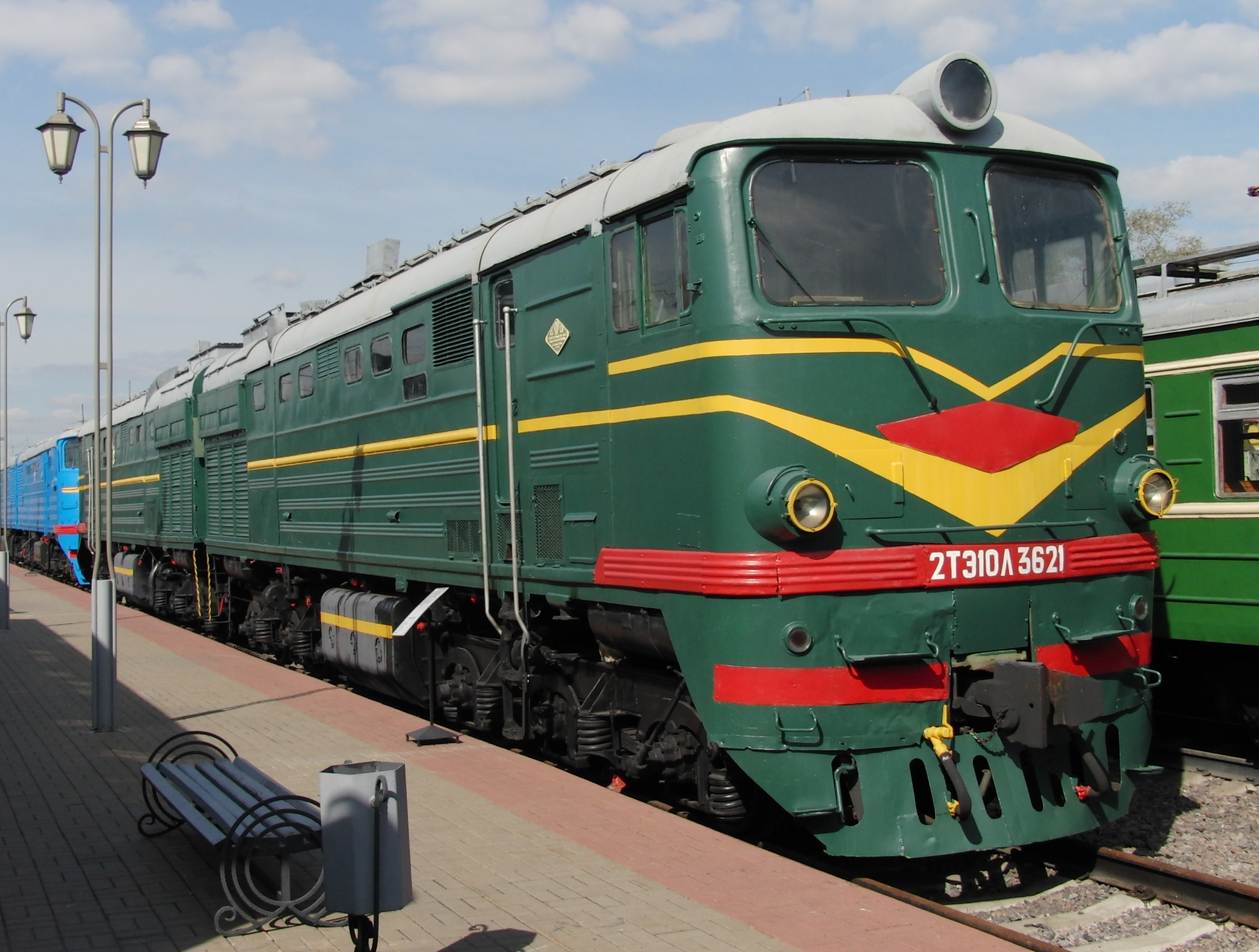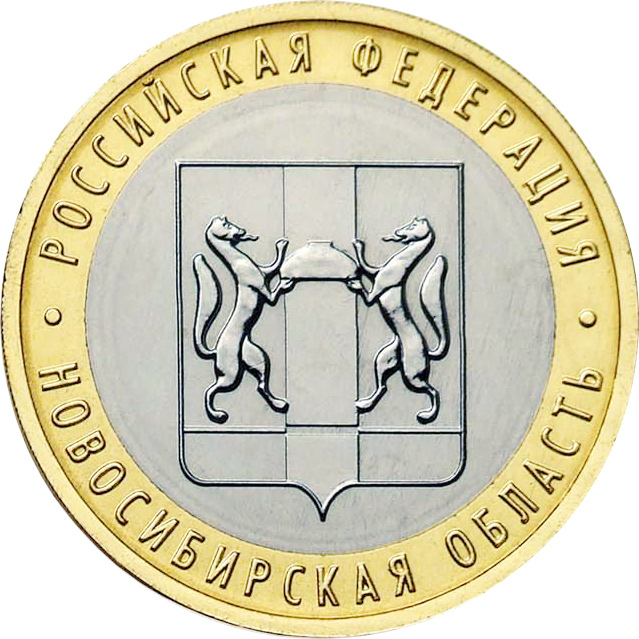|
VL10
The VL10 (ru: –í–õ10) is an electric two-unit mainline DC freight locomotive used in the Soviet Union and is still operated today by the state owned Russian rail company RZhD, Ukrainian Railways and Georgian Railway. The initials ''VL'' are those of Vladimir Lenin (ru: –í–ª–∞–¥–∏–º–∏—Ä –õ–µ–Ω–∏–Ω), after whom the class is named. History The VL10 series was built as a replacement for the ageing VL8 which, by 1960, no longer met Soviet rail requirements. The VL10s were manufactured at the Tbilisi Electric Locomotive Works (–¢–≠–í–ó) between 1961‚Äì1977, as well as the Novocherkassk Electric Locomotive Plant (–ù–≠–í–ó) during 1969 and 1976. It was also there that all the mechanical components for the series were produced. The first prototype of the VL10 series was built in the Tbilisi works under the designation –¢8-001. It was built in 1961 to coincide with the 40th anniversary of Soviet rule in Georgia. Gallery Electric locomotive VL10-007.jpg –í–õ10-218, –Ý–æ—Å—Å–∏—è, –ù–æ–≤–æ— ... [...More Info...] [...Related Items...] OR: [Wikipedia] [Google] [Baidu] |
Novocherkassk Electric Locomotive Plant
Novocherkassk Electric Locomotive Plant (NEVZ), established in 1936, is based in the Russian town of Novocherkassk, Rostov Region. It is now (2015) part of Transmashholding. NEVZ locomotives haul trains transporting 80% of all cargo on the electrified railways of Russia and CIS countries. On its production lines, the plant has produced around 15,000 locomotives of more than 40 types. In June 1962, NEVZ workers went on strike and protested against the rise of food prices in the Soviet Union; the events became known as the Novocherkassk massacre, which took place when the striking workers were shot by Soviet troops. The N. S. Khrushchev government later covered up the story until the early 1990s. List of products Electric locomotives * E5K (–≠5–ö), 2ES5K (2–≠–°5–ö), 3ES5K "Yermak" ("–ï—Ä–º–∞–∫"), 4-, 8- and 12-axle freight AC locos. Built since 2004. * 2ES4K (2–≠–°4–ö, "Donchak"), DC version of Yermak loco. Built since 2008. * EP1 and EP1M (–≠–ü1), AC passenger locos. EP1 b ... [...More Info...] [...Related Items...] OR: [Wikipedia] [Google] [Baidu] |
Ukrainian Railways
Ukrainian Railways ( uk, –£–∫—Ä–∑–∞–ª—ñ–∑–Ω–∏—Ü—è, Ukrzaliznytsia, abbreviated as UZ) is a state-owned joint-stock company of rail transport in Ukraine, a monopoly that controls the vast majority of the railroad transportation in the country. It possesses a combined total track length of over 23,000 km, making it the 13th largest in the world. Ukrainian Railways is also the world's 6th largest rail passenger transporter and world's 7th largest freight transporter. In 2015, Ukrainian Railways transformed through a merger of a state agency and a state-owned enterprise into a public joint stock company owned by state. Ukraine's State Administration of Railroad Transportation is subordinated to the Ministry of Infrastructure, administering the railways through the six territorial railway companies that immediately control and provide of all aspects of the railroad transportation and maintenance under the common Ukrzaliznytsia brand. The general director of the administration ... [...More Info...] [...Related Items...] OR: [Wikipedia] [Google] [Baidu] |
Museum Of The Moscow Railway (Moscow Rizhsky Station)
The Museum of the Moscow Railway at Rizhsky station in Moscow ( Russian: –ú—É–∑–µ–∏ –ú–æ—Å–∫–æ–≤—Å–∫–æ–π –∂–µ–ª–µ–∑–Ω–æ–π –¥–æ—Ä–æ–≥–∏: –≠–∫—Å–ø–æ–∑–∏—Ü–∏–æ–Ω–Ω–∞—è –ø–ª–æ—â–∞–¥–∫–∞ –Ω–∞—Ç—É—Ä–Ω–æ–π –∂–µ–ª–µ–∑–Ω–æ–¥–æ—Ä–æ–∂–Ω–æ–π —Ç–µ—Ö–Ω–∏–∫–∏ –º—É–∑–µ—è –∏—Å—Ç–æ—Ä–∏–∏ –ú–æ—Å–∫–æ–≤—Å–∫–æ–π –∂–µ–ª–µ–∑–Ω–æ–π –¥–æ—Ä–æ–≥–∏) is an open-air exhibition of rolling stock near the Moscow Rizhsky railway station in Moscow Moscow ( , US chiefly ; rus, links=no, –ú–æ—Å–∫–≤–∞, r=Moskva, p=m…êskÀàva, a=–ú–æ—Å–∫–≤–∞.ogg) is the capital and largest city of Russia. The city stands on the Moskva River in Central Russia, with a population estimated at 13.0 million .... Collection The following repainted rail vehicles are exhibited:Andreas BrinkDas Moskauer Eisenbahnmuseum (Rishskij Voksal / Rigaer Bahnhof)/ref> Museum of the Moscow Railway at Rizhskaya station in Moscow (64).jpg, Crane Museum of the Moscow Railway at Rizhskaya station in Moscow (41).jpg, Snow plow Museum of the Mosco ... [...More Info...] [...Related Items...] OR: [Wikipedia] [Google] [Baidu] |
Novosibirsk Oblast
Novosibirsk Oblast (russian: Новосиби́рская о́бласть, ''Novosibirskaya oblast'') is a federal subject of Russia (an oblast) located in southwestern Siberia. Its administrative and economic center is the city of Novosibirsk. The population was 2,788,849 as of the 2018 Census. Geography Overview Novosibirsk Oblast is located in the south of the West Siberian Plain, at the foothills of low Salair ridge, between the Ob and Irtysh Rivers. The oblast borders Omsk Oblast in the west, Kazakhstan ( Pavlodar Province) in the southwest, Tomsk Oblast in the north, Kemerovo Oblast in the east, and Altai Krai in the south. The territory of the oblast extends for more than from west to east, and for over from north to south. The oblast is mainly plain; in the south the steppes prevail; in the north enormous tracts of woodland with great number of marshes prevail. There are many lakes, the largest ones located at the south. The majority of the rivers belo ... [...More Info...] [...Related Items...] OR: [Wikipedia] [Google] [Baidu] |
Bo′Bo′+Bo′Bo′ Locomotives
B-B and Bo-Bo are the Association of American Railroads (AAR) and British classifications of wheel arrangement for railway locomotives with four axles in two individual bogies. They are equivalent to the B′B′ and Bo′Bo′ classifications in the UIC system. The arrangement of two, two-axled, bogies is a common wheel arrangement for modern electric and diesel locomotives. Bo-Bo Bo-Bo is the UIC indication of a wheel arrangement for railway vehicles with four axles in two individual bogies, all driven by their own traction motors. It is a common wheel arrangement for modern electric and diesel-electric locomotives, as well as power cars in electric multiple units. Most early electric locomotives shared commonalities with the steam engines of their time. These features included side rods and frame mounted driving axles with leading and trailing axles. The long rigid wheelbase and the leading and trailing axles reduced cornering stability and increased weight. The Bo-Bo con ... [...More Info...] [...Related Items...] OR: [Wikipedia] [Google] [Baidu] |
3000 V DC Locomotives
3 (three) is a number, numeral and digit. It is the natural number following 2 and preceding 4, and is the smallest odd prime number and the only prime preceding a square number. It has religious or cultural significance in many societies. Evolution of the Arabic digit The use of three lines to denote the number 3 occurred in many writing systems, including some (like Roman and Chinese numerals) that are still in use. That was also the original representation of 3 in the Brahmic (Indian) numerical notation, its earliest forms aligned vertically. However, during the Gupta Empire the sign was modified by the addition of a curve on each line. The NƒÅgarƒ´ script rotated the lines clockwise, so they appeared horizontally, and ended each line with a short downward stroke on the right. In cursive script, the three strokes were eventually connected to form a glyph resembling a with an additional stroke at the bottom: ý•©. The Indian digits spread to the Caliphate in the 9th c ... [...More Info...] [...Related Items...] OR: [Wikipedia] [Google] [Baidu] |
Electric Locomotives Of The Soviet Union
Electricity is the set of physical phenomena associated with the presence and motion of matter that has a property of electric charge. Electricity is related to magnetism, both being part of the phenomenon of electromagnetism, as described by Maxwell's equations. Various common phenomena are related to electricity, including lightning, static electricity, electric heating, electric discharges and many others. The presence of an electric charge, which can be either positive or negative, produces an electric field. The movement of electric charges is an electric current and produces a magnetic field. When a charge is placed in a location with a non-zero electric field, a force will act on it. The magnitude of this force is given by Coulomb's law. If the charge moves, the electric field would be doing work on the electric charge. Thus we can speak of electric potential at a certain point in space, which is equal to the work done by an external agent in carrying a unit of positi ... [...More Info...] [...Related Items...] OR: [Wikipedia] [Google] [Baidu] |
Electric Locomotives Of Armenia
Electricity is the set of physics, physical Phenomenon, phenomena associated with the presence and motion of matter that has a property of electric charge. Electricity is related to magnetism, both being part of the phenomenon of electromagnetism, as described by Maxwell's equations. Various common phenomena are related to electricity, including lightning, static electricity, electric heating, electric discharges and many others. The presence of an electric charge, which can be either positive or negative, produces an electric field. The movement of electric charges is an electric current and produces a magnetic field. When a charge is placed in a location with a non-zero electric field, a force will act on it. The magnitude of this force is given by Coulomb's law. If the charge moves, the electric field would be doing Work (physics), work on the electric charge. Thus we can speak of electric potential at a certain point in space, which is equal to the work done by an externa ... [...More Info...] [...Related Items...] OR: [Wikipedia] [Google] [Baidu] |
Electric Locomotives Of Russia
Electricity is the set of physical phenomena associated with the presence and motion of matter that has a property of electric charge. Electricity is related to magnetism, both being part of the phenomenon of electromagnetism, as described by Maxwell's equations. Various common phenomena are related to electricity, including lightning, static electricity, electric heating, electric discharges and many others. The presence of an electric charge, which can be either positive or negative, produces an electric field. The movement of electric charges is an electric current and produces a magnetic field. When a charge is placed in a location with a non-zero electric field, a force will act on it. The magnitude of this force is given by Coulomb's law. If the charge moves, the electric field would be doing work on the electric charge. Thus we can speak of electric potential at a certain point in space, which is equal to the work done by an external agent in carrying a unit of positi ... [...More Info...] [...Related Items...] OR: [Wikipedia] [Google] [Baidu] |
History Of Rail Transport In Russia
Russia was and is the largest country in the world. Its geography of north–south rivers and east–west commerce, plus, importantly, the mostly flat terrain, made it very suited to develop railroads as the basic mode of transportation. Today Russian Railways, a state-owned railway company, is one of the biggest railway companies in the world with 950,000 employees and a monopoly within Russia. The total length of line used by the Russian Railways is, at , one of the largest in the world, exceeded only by the United States. General history Russian Empire (1837–1917) In the early 1830s Russian inventors father and son Cherepanovs built the first Russian steam locomotive. The first railway line was built in Russia in 1837 between Saint-Petersburg and Tsarskoye Selo, and called the Tsarskoye Selo Railway. It was 27 km long and linked the Imperial Palaces at Tsarskoye Selo and Pavlovsk. Track gauge was 6 feet (1830 mm). This railway has been described as a " ... [...More Info...] [...Related Items...] OR: [Wikipedia] [Google] [Baidu] |





